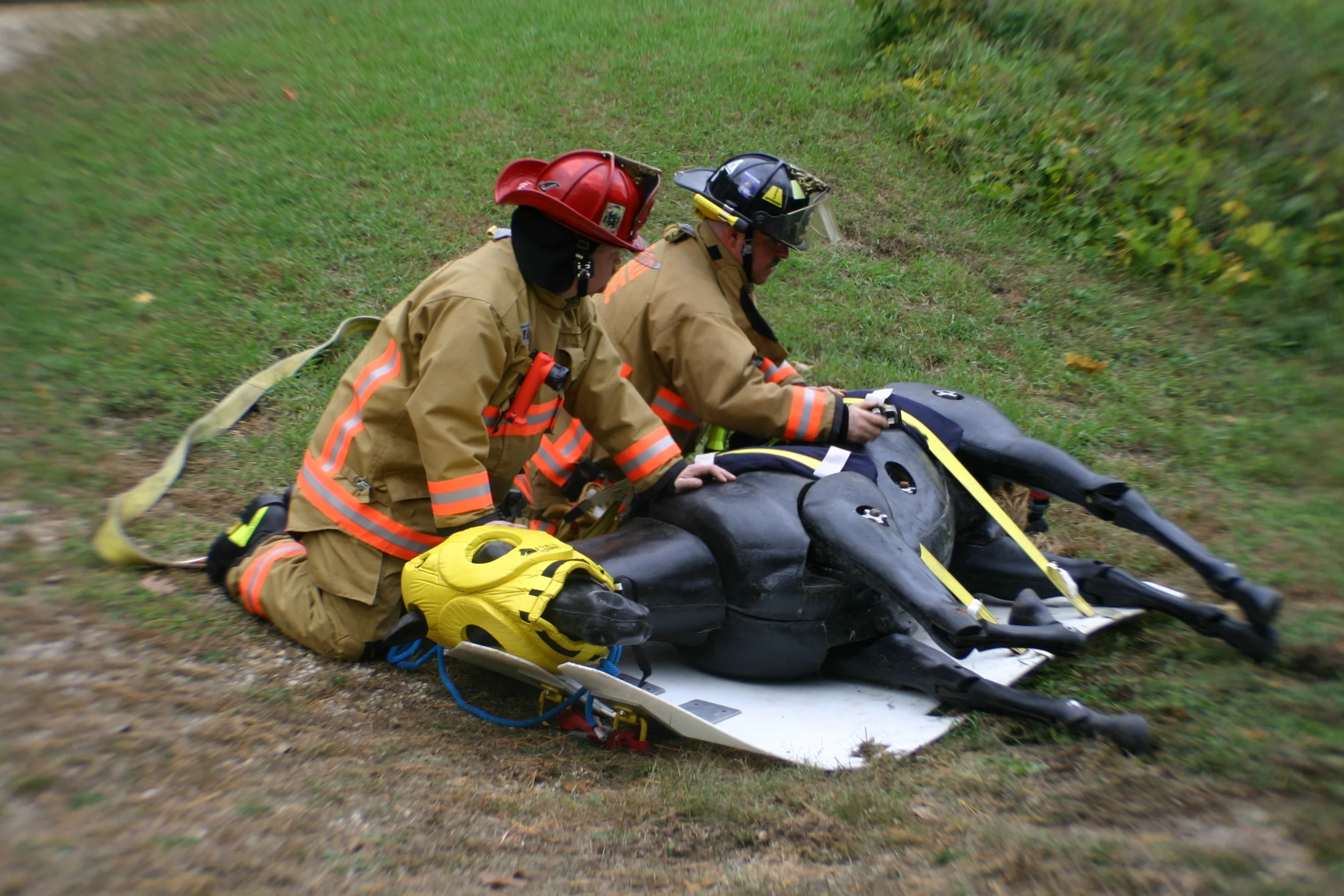Written By: Howard Ketover, DVM
In winter terrain and weather, a horse that’s down on ice is in a life threatening situation. The horse may be suffering from an injury from falling on the ice, or have hypothermia from laying in the snow/ice for a long period of time. This is often from an inability to stand due to poor traction and muscle weakness from the cold.
I want to go over the basics regarding helping a downed horse in the winter time, but first, I have three main rules:
Safety is paramount
These are dangerous situations, and the horses may act unpredictably. As you know, animals that are injured, scared, or unsure (particularly the flight-driven horses) are likely to act unpredictably when approached in a moment of weakness. Stay safe – if you get hurt and aren’t able to help your horse, who will?
Call for help
In that same vein, get help immediately. Your first call should be to your veterinarian. Following that, ask for help from others at the barn, nearby friends, etc.
Act quickly
Particularly when we’re talking about a downed horse in the winter, time is of the essence. There’s a concept called the “Golden Hour” to think about when your horse is down in winter weather. Depending on the amount of windchill and/or the surface your horse is down on, that “Golden Hour” could be longer or shorter. Be quick and decisive with your decisions, as well as your actions.
Now that you know our three rules to helping a down horse, let’s move on to the steps you should be taking to help. Watch the video below for a more detailed explanation of helping a downed horse.
In this video, Dr. Howard Ketover explains how to safely help a downed horse.
Determine why she’s down
When a horse is down, it can be either due to a primary injury or poor footing (particularly in the winter). Your veterinarian, who you called immediately because of rule #2, can quickly determine if there’s an injury that you need to consider. However, sometimes you can quickly look at the situation and know that the horse is struggling due to glare ice or slippery footing.
Improve footing and traction
One thing that you can do to improve the footing is to add cat litter under your horse’s feet, which can provide significant traction. If you don’t have any cat litter on hand, you can also try sand, though this may still be slippery on ice.
Roll your horse
While footing may have been the original cause of the problem, after laying on one side in the ice and snow for a long period of time, your horse may be suffering from hypothermia. Those muscles may be fatigued from the pressure of being laid on for a long period of time, and they may also be weak from using those muscles trying to get up multiple times. We’ll cover the mechanics of rolling a horse at another time, but if you work with your veterinarian, you should be able to do this safely. After you have rolled your horse, help her warm that other side by putting warm blankets on her. She may only have one more attempt to get up left in her, so it’s important to you help her as much as you can. Don’t just stick with a regular quilt or horse blanket – pull out an emergency SPACE blanket, which you can buy from Walmart, Amazon, outdoors stores, etc., for less than $5.00. Put the SPACE blanket immediately on your horse, and other blankets on top of that. The increased warmth may give your horse the impetus to stand that she needs.
Here’s an example of how you can roll a horse. There are many different methods to do this – here is one of the safer ones. Please proceed with caution when attempting to roll a horse, and work with professionals if possible. Get in contact with Wisconsin Large Animal Emergency Response if you’d like to set up a class on technical rescue.
Change her location
Sometimes you can try to move your horse to a warmer location, or more even ground. Mechanical tractors or a skid steer might be your first inclination, but it can be extremely dangerous for the horse as well as the operator of the machine. Instead, you can try to put your horse on a tarp or a piece of plywood, and glide that across the snow and ice. At that point, you can move her to a warmer location with better footing, and hopefully she can stand there.
Have more questions?
Wisconsin Large Animal Emergency Response, led by Dr. Ketover, hosts classes on how to complete technical rescues for first responders, as well as horse owner associations and groups. If you have questions, need technical assistance, or want to discuss technique, please reach out to us at 608-845-6006, or contact us via email.
By Dr. Howard Ketover























